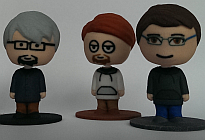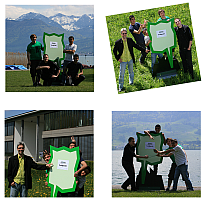3. Micro Mapping Party Rapperswil 2014
Aus Geoinformation HSR
23. May 2014, starting at 14:00h, Building 6 (entry hall/foyer 'Seegebäude', see OSM-Marker-Stele), HSR Hochschule für Technik Rapperswil .
>> Mappers pls. fill in your name at [1] (23. Mai only; man spricht auch Deutsch).
Inhaltsverzeichnis
Organization
- What's the motto? Mapping buildings and addresses in and around Rappi (ans elsewhere)!
- When does it start: 23. May 2014, 14:00h
- Where's the meeting point? Room/PC-Lab 6.004, Building 6, HSR Hochschule für Technik Rapperswil
- Who's the organizer? User:Stefan (Prof. Stefan Keller from Geometa Lab at IFS, HSR)
- Who participates? We expect a dozen people, mostly interns from Asia but also mappers from the surroundings.
- What to bring along? Your GPS and/or your mobile device with fully charged batteries (don't forget the power charger). Drink and food are offered by the HSR
Participant list:
- Stefan K. together with Rafael K. and Tobias S. (organizing team from Geometa Lab at IFS, HSR)
- Wang Kailong
- Phan Cong Minh (Minh)
- Chen Xianyao
- Hao Feng (Hao)
- Swoo Wei Cheng
- Liu Guanqun
- Zhang Ruzhuang
- and probably some external OSM mappers.
Programm
Tentative(!) Program:
- 14:00 Arrival at Building 6, HSR Campus Rapperswil
- 14:10 - 14:30: Instructions
- 14:30 - 15:30: Mapping outdoor
- 15:30 - 17:30 Work on PC (Edit)
- 17:30: Barbecue at "Fäschtinsle" nearby!
- ...until 20:20 sunset or open end.
FAQ
What is OpenStreetMap?
See OpenStreetMap (OSM) Wiki. The statistics showing the continuous growth of OSM are just stunning.
What's a Mapping Party?
See [2] (Was ist eine Mapping Party? siehe Micro Mapping Party Rapperswil).
- How to map an address?
- To be a contributor to OpenStreetMap, firstly register to be an OSM user [3]
- Addresses can be tagged with addr:housenumber=* and the other addr:* keys. Tags can be added to
- isolated nodes
- nodes that are parts of building polygons ( = entrance=*s )
- building=* polygons
- on polygons representing the perimeter of the site.
- Buildings with multiple house numbers - There is currently no consensus on this but here are some possibilities:
- Create an address node for each housenumber and place each node somewhere on the building outline (or inside the building).
- Separate the numbers by commas (e.g., "11,13,15").
- Specify the range (e.g., "10-95"). This is the preferred method when such a range is officially used for the entire house. You may also use **addr:interpolation=* to describe whether that includes odd, even or all numbers.
How to map a building?
- A single building outline can be created for each building complex or 'block', which may relate to a single detached property, or to a row of individual terraced houses or to some more complex arrangement of properties. It is however better to create a series of linked outlines which share some nodes at the boundary to identify each distinct part of the property.
- Buildings can simply be building=yes
- If the building has an interior courtyard the use a Multipolygon relation to ensure that the courtyard is not rendered as part of the building.
- Please consider adding house numbers nodes to buildings with tags in addr:*=*-Namespace:
- entrance=yes (if you know where the entrance is)
- addr:street=*
- addr:housenumber=*
- addr:postcode=*

